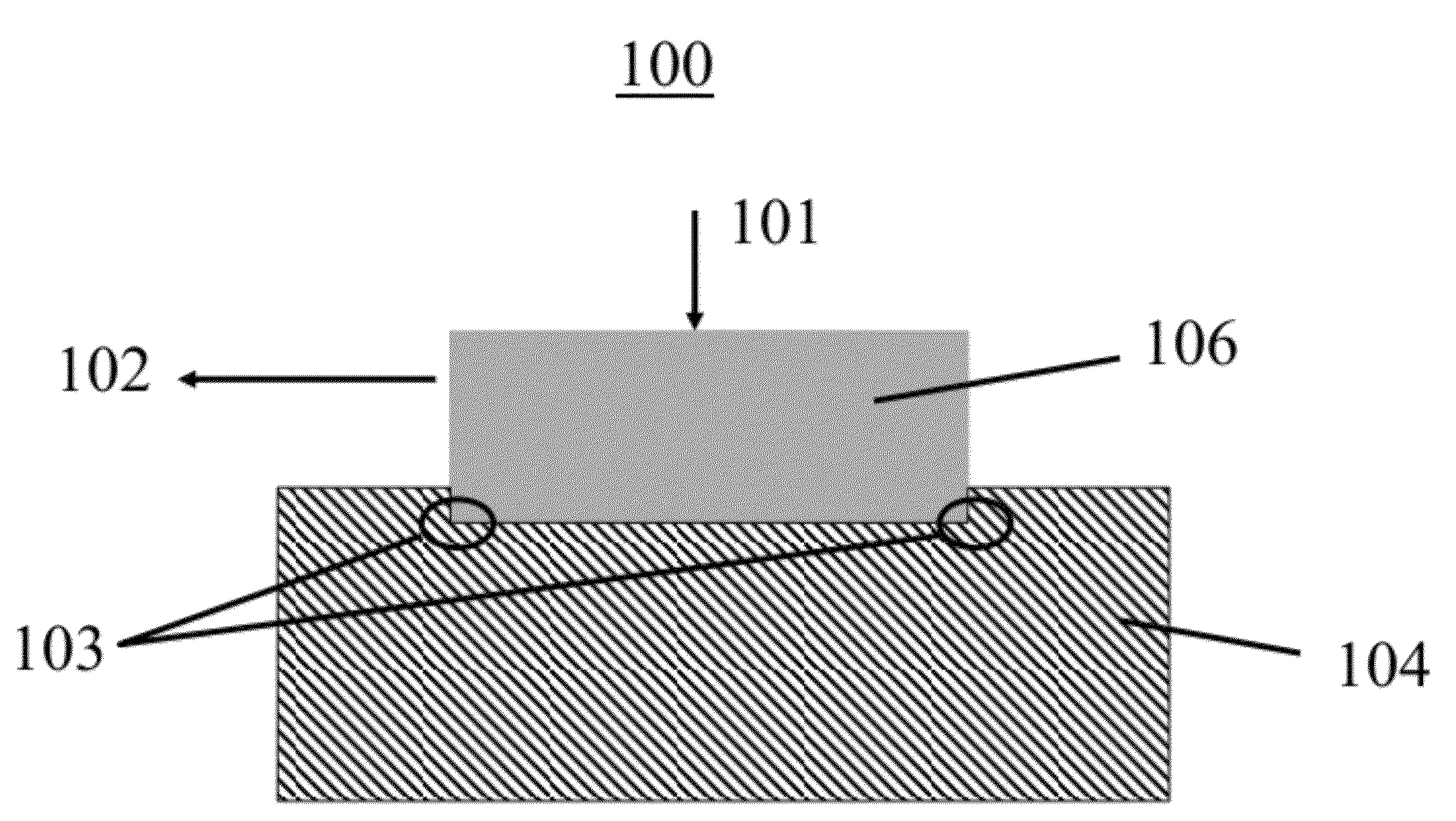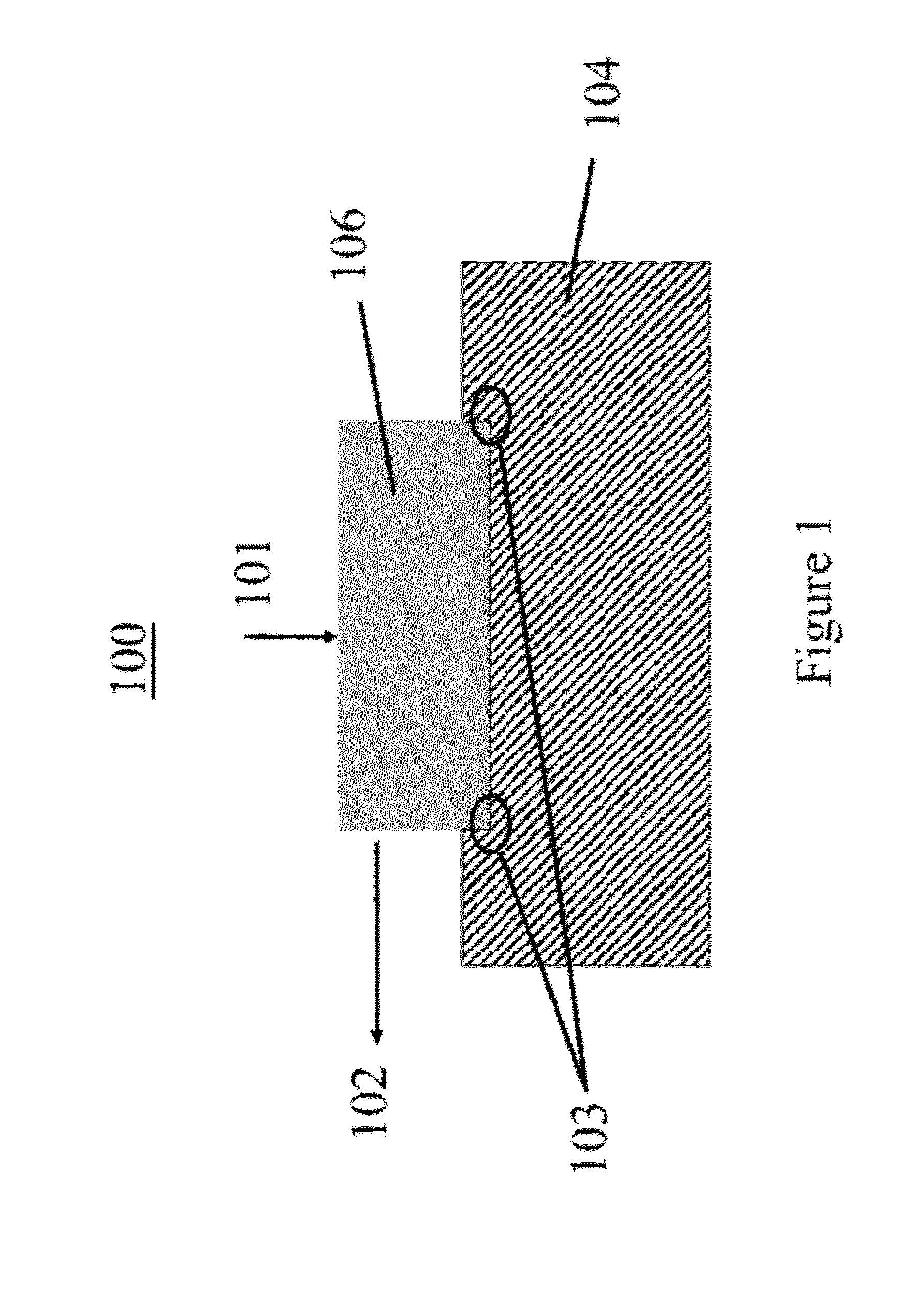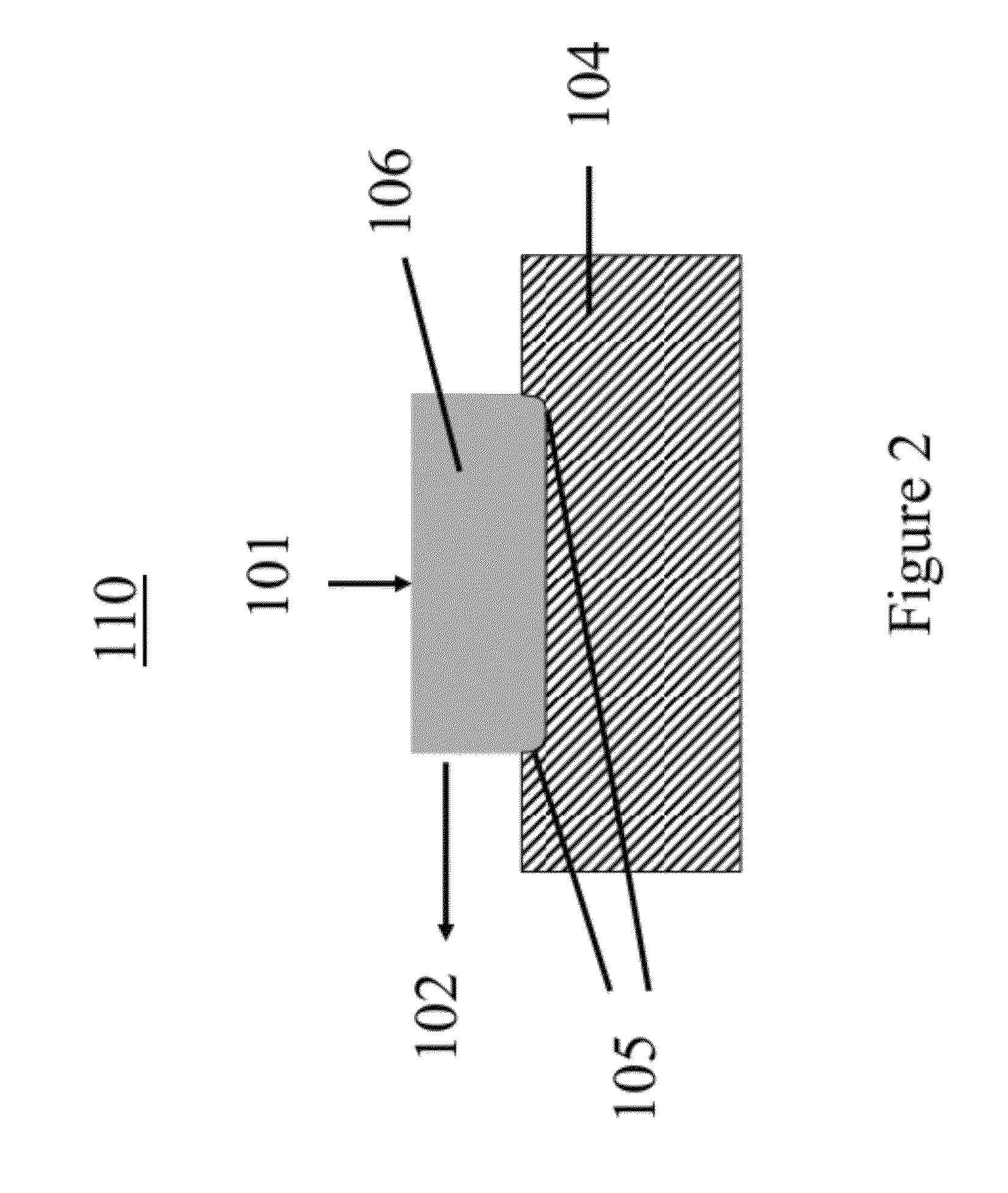Method to enhance polishing performance of abrasive charged structured polymer substrates
a structured polymer substrate and polishing technology, applied in the direction of grinding/polishing apparatus, manufacturing tools, lapping machines, etc., can solve the problems of reducing the hydrodynamic pressure countering the applied preload, the difficulty of generating continuous and concentric grooves spaced with 30-100 nm, and the difficulty of manufacturing viewpoints to achieve such feature size, etc., to enhance the adhesion of lubricant, enhance the lubrication of the interface, and enhance the lub
- Summary
- Abstract
- Description
- Claims
- Application Information
AI Technical Summary
Benefits of technology
Problems solved by technology
Method used
Image
Examples
Embodiment Construction
[0032]Disclosed herein is the use discrete patterns arranged such that the slider bar is exposed to a substantially constant area of the polyamide. A polishing article 400 with staggered series of grooves 401, 402, and 403 repeating with a desired frequency is shown in FIG. 9. For example a series of uniformly spaced curvilinear patterns housing a series of islands are arranged on a circular substrate. For illustrative purposes we will assume that the bar width is equal to the polishing island width along the circumference of the substrate. As slider bar engages island A it disengages island C from the previous curvilinear segment of islands. As the spinning substrate engages island B under the bar, the slider bar disengages from island A leading to a constant area underneath the slider bar regardless of its location on the substrate. The benefit of this approach leads to a substantial reduction of the hydrodynamic film under a series of islands while maintaining a substantially uni...
PUM
 Login to View More
Login to View More Abstract
Description
Claims
Application Information
 Login to View More
Login to View More - R&D
- Intellectual Property
- Life Sciences
- Materials
- Tech Scout
- Unparalleled Data Quality
- Higher Quality Content
- 60% Fewer Hallucinations
Browse by: Latest US Patents, China's latest patents, Technical Efficacy Thesaurus, Application Domain, Technology Topic, Popular Technical Reports.
© 2025 PatSnap. All rights reserved.Legal|Privacy policy|Modern Slavery Act Transparency Statement|Sitemap|About US| Contact US: help@patsnap.com



